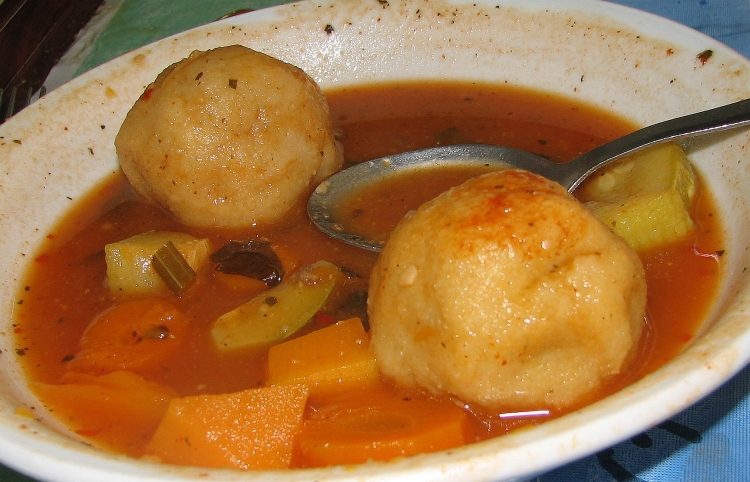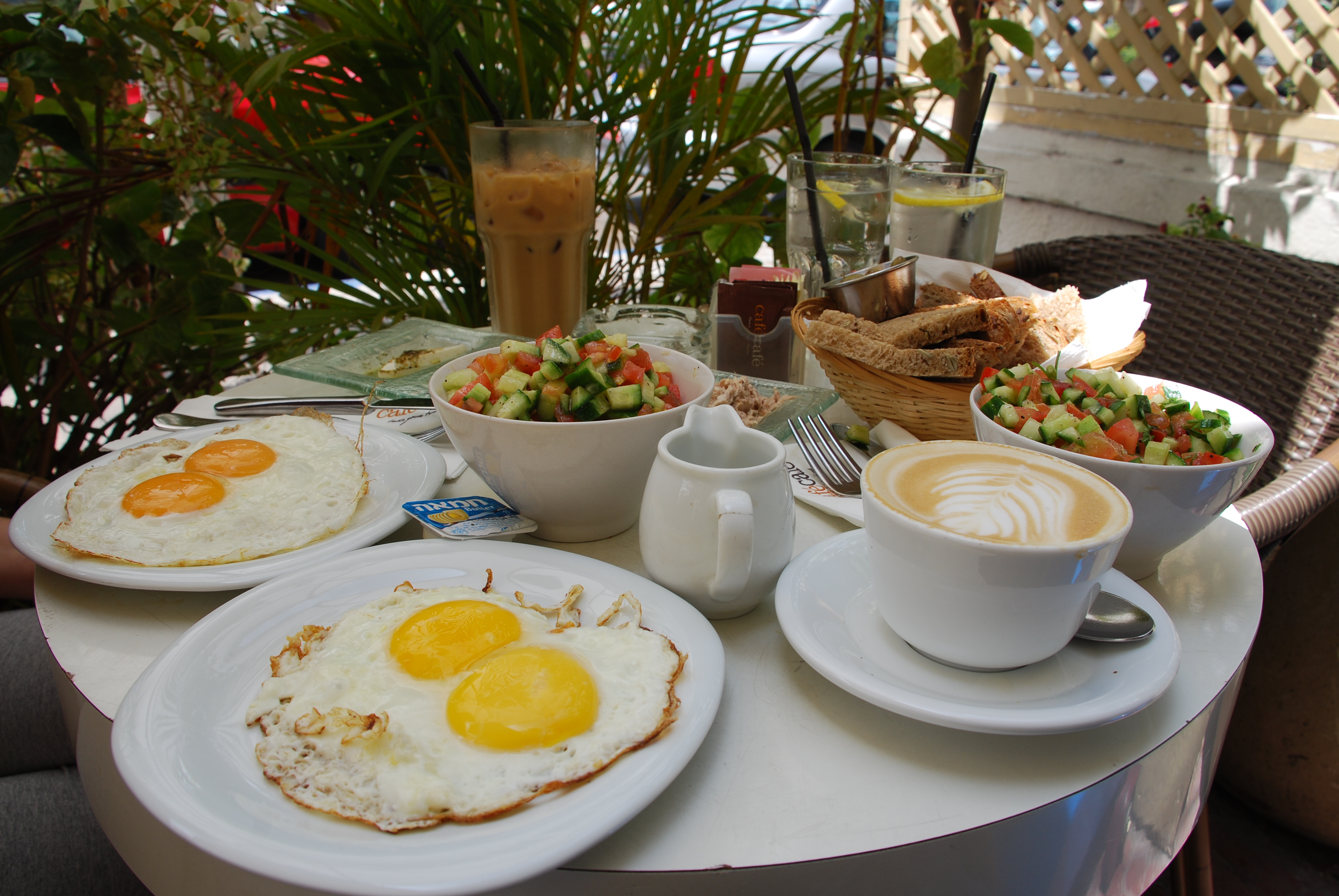|
Borani
Borani ( fa, بورانی, bowrâni) is a salad dish from Iranian cuisine. It is also found in Turkish cuisine where it is associated with certain provinces like Isparta, Urfa and Van. Some versions are made with spinach and yogurt, while the Ancient Persian borani was made with eggplant, and a regional version from Urfa is made with lamb and vegetarian meatballs. Borani is also popular in the Caucasus and Afghanistan. Terminology Borani was the name of an eggplant dish in Ancient Persian cuisine. In the cuisine of Urfa province borani is a lamb and bulgur kofta dish made with chard and chickpeas, sometimes called "Urfa borani". There is also a form of the dish made with spinach and yogurt, and other versions made with different ingredients combined with yogurt. In southern Albania the term describes a baked egg and spinach dish. In Gaziantep there is version without any yogurt, called borani, and made with black-eyed peas and ground lamb. In a study on the 'Foods and Bread ... [...More Info...] [...Related Items...] OR: [Wikipedia] [Google] [Baidu] |
Turkish Cuisine
Turkish cuisine () is the cuisine of Turkey and the Turkish diaspora. It is largely the heritage of Ottoman cuisine, which can be described as a fusion and refinement of Mediterranean, Balkan, Middle Eastern, Central Asian and Eastern European cuisines. Turkish cuisine has in turn influenced those and other neighbouring cuisines, including those of Southeast Europe (Balkans), Central Europe, and Western Europe. The Ottomans fused various culinary traditions of their realm taking influences from and influencing Mesopotamian cuisine, Greek cuisine, Levantine cuisine, Egyptian cuisine, Balkan cuisine, along with traditional Turkic elements from Central Asia (such as mantı, ayran, kaymak), creating a vast array of specialities. Turkish cuisine also includes dishes invented in the Ottoman palace kitchen. Turkish cuisine varies across the country. The cooking of Istanbul, Bursa, Izmir, and rest of the Anatolia region inherits many elements of Ottoman court cuisine, inclu ... [...More Info...] [...Related Items...] OR: [Wikipedia] [Google] [Baidu] |
Yogurt
Yogurt (; , from tr, yoğurt, also spelled yoghurt, yogourt or yoghourt) is a food produced by bacterial Fermentation (food), fermentation of milk. The bacteria used to make yogurt are known as ''yogurt cultures''. Fermentation of sugars in the milk by these bacteria produces lactic acid, which acts on milk protein to give yogurt its texture (food), texture and characteristic tart flavor. Cow's milk is the milk most commonly used to make yogurt. Milk from water buffalo, goats, sheep, ewes, mares, camels, and yaks are also used to produce yogurt. The milk used may be Milk#Creaming and homogenization, homogenized or not. It may be pasteurized or raw milk, raw. Each type of milk produces substantially different results. Yogurt is produced using a culture of Lactobacillus delbrueckii subsp. bulgaricus, ''Lactobacillus delbrueckii'' subsp. ''bulgaricus'' and ''Streptococcus thermophilus'' bacteria. In addition, other Lactobacillus, lactobacilli and Bifidobacterium, bifidobacteria a ... [...More Info...] [...Related Items...] OR: [Wikipedia] [Google] [Baidu] |
Persia
Iran, officially the Islamic Republic of Iran, and also called Persia, is a country located in Western Asia. It is bordered by Iraq and Turkey to the west, by Azerbaijan and Armenia to the northwest, by the Caspian Sea and Turkmenistan to the north, by Afghanistan and Pakistan to the east, and by the Gulf of Oman and the Persian Gulf to the south. It covers an area of , making it the 17th-largest country. Iran has a population of 86 million, making it the 17th-most populous country in the world, and the second-largest in the Middle East. Its largest cities, in descending order, are the capital Tehran, Mashhad, Isfahan, Karaj, Shiraz, and Tabriz. The country is home to one of the world's oldest civilizations, beginning with the formation of the Elamite kingdoms in the fourth millennium BC. It was first unified by the Medes, an ancient Iranian people, in the seventh century BC, and reached its territorial height in the sixth century BC, when Cyrus the Great fou ... [...More Info...] [...Related Items...] OR: [Wikipedia] [Google] [Baidu] |
Saffron
Saffron () is a spice derived from the flower of ''Crocus sativus'', commonly known as the "saffron crocus". The vivid crimson stigma and styles, called threads, are collected and dried for use mainly as a seasoning and colouring agent in food. Although some doubts remain on its origin, it is believed that saffron originated in Iran. However, Greece and Mesopotamia have also been suggested as the possible region of origin of this plant. Saffron crocus slowly propagated throughout much of Eurasia and was later brought to parts of North Africa, North America, and Oceania. Saffron's taste and iodoform-like or hay-like fragrance result from the phytochemicals picrocrocin and safranal. It also contains a carotenoid pigment, crocin, which imparts a rich golden-yellow hue to dishes and textiles. Its recorded history is attested in a 7th-century BC Assyrian botanical treatise, and has been traded and used for thousands of years. In the 21st century, Iran produces some 90% of ... [...More Info...] [...Related Items...] OR: [Wikipedia] [Google] [Baidu] |
Mehmet Zeki Oral
Mehmed (modern Turkish: Mehmet) is the most common Bosnian and Turkish form of the Arabic name Muhammad ( ar, محمد) (''Muhammed'' and ''Muhammet'' are also used, though considerably less) and gains its significance from being the name of Muhammad, the prophet of Islam. Originally the intermediary vowels in the Arabic ''Muhammad'' were completed with an ''e'' in adaptation to Turkish phonotactics, which spelled Mehemed and the name lost the central ''e'' over time Final devoicing of ''d'' to ''t'' is a regular process in Turkish. The prophet himself is referred to in Turkish using the archaic version, ''Muhammed''. The name Mehmet also often appears in derived compound names. The name is also prevalent in former Ottoman territories, particularly among Balkan Muslims in Albania, Bosnia and Kosovo. The name is also commonly used in Turkish culture in the form of Mehmetçik, meaning ''little Mehmet'', for unranked soldiers. Given name Mehmed *Mehmed I (1382–1421), Ottoman ... [...More Info...] [...Related Items...] OR: [Wikipedia] [Google] [Baidu] |
Caucasian Cuisine
The cuisine of the Caucasus refers to the cuisine of Armenia, Azerbaijan, Georgia (country), Georgia and North Caucasus. Traditional dishes Plates Some popular cheeses from the Caucasus include: * Ashvlagwan ''(Ашвлагуан)'' — Abkhazian cuisine, Abkhaz smoked cheese, similar to sulguni. * Chechil ''(Չեչիլ)'' — String (often smoked) cheese, made in Armenia. * Chechili ''(ჩეჩილი)'' — Cheese in shape of ropes, made in south Georgia (Country), Georgia. * Circassian cheese, Adyga kwae — ''(Адыгэ Къуае)'' - Mild cheese, made in Circassia. * Chkinti' ''(ჭყინტი)'' - Salty and "juicy" cheese made originally in Imereti. * Dambalkhacho ''(დამბალხაჭო)'' — "Rotten" cheese made in Pshavi and Mtiuleti. * Guda ''(გუდა)'' — Cheese made from sheep milk in Tusheti. Its preparation takes 20 days. * Iron tsykht ''(Ирон Цыхт)'' — Cheese made in Ossetia. * Beyaz peynir, Qatik — Sour creamy cheese, made ... [...More Info...] [...Related Items...] OR: [Wikipedia] [Google] [Baidu] |
Aromanian Cuisine
Aromanian cuisine ( rup, Cujina armãneascã) is the traditional cuisine of the Aromanians. The Aromanians are a small Balkan ethnic group scattered throughout the region, living in the countries of Albania, Bulgaria, Greece, North Macedonia, Romania and Serbia. Aromanian cuisine has been strongly influenced by Mediterranean and Middle Eastern cuisine. In Greece, the Aromanian village of Metsovo () stands out for the cheeses made there. The most popular cheeses from Metsovo are Metsovone and Metsovela, although other types of cheeses such as Graviera are also produced in Metsovo. Much of the cheeses coming from Metsovo are fabricated on the Tositsa Foundation Cheese Factory, operating since 1958. Aside from cheeses, some typical Metsovite dishes include meats such as kontosouvli and sausages, as well as pies with vegetables and mushrooms and bean soup, all of which can be accompanied with local wine. Outside of Metsovo, the Aromanian pie Batzina is popular in the area of Aspro ... [...More Info...] [...Related Items...] OR: [Wikipedia] [Google] [Baidu] |
Mizrahi Jewish Cuisine
Mizrahi Jewish cuisine is an assortment of cooking traditions that developed among the Jews of the Middle East, North Africa, Asia, and Arab countries. Mizrahi Jews have also been known as Oriental Jews (''Mizrahi'' is Hebrew: Eastern or Oriental). Jews of the Mizrahi communities cook foods that were and are popular in their home countries, while following the laws of '' kashrut''. The cuisine is based largely on fresh ingredients, as marketing was done in the local '' souq''. Meat is ritually slaughtered in the ''shechita'' process, and is soaked and salted. Meat dishes are a prominent feature of Shabbat, festival, and celebratory meals. Cooked, stuffed and baked vegetables are central to the cuisine, as are various kinds of beans, chickpeas, lentils and burghul (cracked wheat). Rice takes the place of potatoes. History Mizrahi Jews are the Jews of the Middle East, and points south and east, largely along the Mediterranean coastal areas and the Levant. In some countries ... [...More Info...] [...Related Items...] OR: [Wikipedia] [Google] [Baidu] |
Israeli Cuisine
Israeli cuisine ( he, המטבח הישראלי ) comprises both local dishes and dishes brought to Israel by Jews from the Diaspora. Since before the establishment of the Israel, State of Israel in 1948, and particularly since the late 1970s, an Israeli Jewish fusion cuisine has developed.Gold, Rozann''A Region's Tastes Commingle in Israel'' (July 20, 1994) in ''The New York Times'' Retrieved 2010–02–14 Israeli cuisine has adopted, and continues to adapt, elements of various styles of Arab cuisine and diaspora Jewish cuisine, particularly the Cuisine of the Mizrahi Jews, Mizrahi, Cuisine of the Sephardic Jews, Sephardic and Ashkenazi_Jewish_cuisine, Ashkenazi styles of cooking. It incorporates many foods traditionally included in other Middle Eastern cuisine, Middle Eastern and Mediterranean cuisines, so that spices like ''za'atar'' and foods such as ''falafel'', ''hummus'', ''msabbha'', ''shakshouka'' and ''couscous'' are now widely popular in Israel.Gur, ''The Book of New ... [...More Info...] [...Related Items...] OR: [Wikipedia] [Google] [Baidu] |
Azerbaijani Cuisine
Azerbaijani cuisine ( az, Azərbaycan mətbəxi) refers to the cooking styles and dishes of the Republic of Azerbaijan. The cuisine developed significantly due to its diversity of agriculture, from abundant grasslands which historically allowed for a culture of pastoralism to develop, as well as to the unique geographical location of Azerbaijan, which is situated on the crossroads of Europe and Asia with an access to the Caspian Sea. The location has enabled the people to develop a varied diet rich in produce, milk products, and meat, including beef, mutton, fish and game. The location, which was contended over by many historical kingdoms, khanates, and empires, also meant that Azerbaijani cuisine was influenced by the culinary traditions of multiple different cultures, such as Turkic, Iranian, and Eastern European. History and features of Azerbaijan national cuisine Azerbaijan's national cuisine is closer to Middle Eastern cuisine due to the taste and preparation of the dishes ... [...More Info...] [...Related Items...] OR: [Wikipedia] [Google] [Baidu] |
Tzatziki
Tzatziki ( el, τζατζίκι), also known as tarator or cacık (), is a dip, soup, or sauce found in the cuisines of Southeast Europe and the Middle East. It is made of salted strained yogurt or diluted yogurt mixed with cucumbers, garlic, salt, olive oil, sometimes with vinegar or lemon juice, and herbs such as dill, mint, parsley and thyme. It is served as a cold appetizer (''mezze''), a side dish, and as a sauce for souvlaki and gyros sandwiches and other foods. History ''Tarator'' was the name of a dish made of ground walnuts and vinegar in the Ottoman Empire. Dishes of various preparations in the region, including dips, salads, and sauces, acquired the name. In the Levant, ''taratur'' is a sauce based on tahini, while in Turkey and the Balkans it came to mean a combination of yogurt and cucumbers, sometimes with walnuts. It has become a traditional part of meze. Etymology The word ''tzatziki'' appeared in English around the mid-20th century as a loanword from Modern ... [...More Info...] [...Related Items...] OR: [Wikipedia] [Google] [Baidu] |







